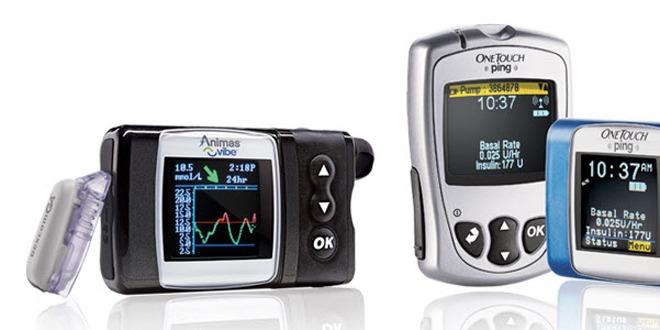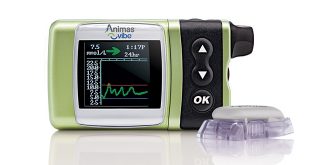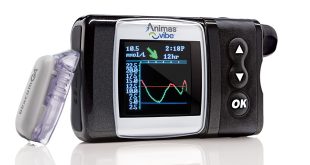What is an insulin pump, and how does it work?
An insulin pump is a small, computerized device that provides your body with insulin throughout the day. It’s about the size of a mobile telephone or a pager.
There are three main components to insulin pump therapy:
- A pump (with a battery and controls), which delivers the insulin into your body.
- A reservoir or a cartridge in the pump, where insulin is held.
- An infusion set, which includes a thin tube that is attached to the reservoir in the pump and runs to the infusion site on your body, where a short cannula (sometimes called a catheter) is inserted under your skin.
Insulin pumps work around the clock, using a programmed plan that is unique to each pump wearer. You healthcare team can help you determine which insulin pump is best for you, as well as your insulin dosing plan.
How is insulin delivered with an insulin pump?
Insulin pumps deliver rapid- or short-acting insulin 24 hours a day through the cannula that is placed under your skin. Insulin dosing is done using:
- Basal rates. Basal (background) insulin is delivered continuously over 24 hours, and keeps your blood glucose levels in their target range between meals and overnight. You can program different amounts of insulin at different times of the day and night.
- Bolus doses to cover carbohydrate in meals. When you eat, buttons on the insulin pump allow you to give additional insulin for your food (this is the bolus dose). You take a bolus to cover the carbohydrate in each meal or snack. If you eat more than you planned, you can simply program a larger bolus of insulin to cover it.
- Correction or supplemental doses. You can also take a bolus to treat high blood glucose levels. If you have a high blood glucose level, you give a correction or supplemental bolus of insulin to bring it back to your target range.
What are the pros and cons of insulin pumps?
Pros
- The pump delivers insulin continuously throughout the day, causing fewer sudden highs and lows in blood glucose levels.
- The delivery of insulin is more accurate and precise, i.e. the pump can deliver insulin in 0.025 unit doses.
- Fewer needle sticks! You may have one injection (hook up) every three days, versus 15 to 18 injections over a three-day period with injection therapy.
- Reduced risk of episodes of severe hypoglycemia.
- Adjusting your own insulin allows for a more flexible lifestyle.
Cons
- Increased risk of developing diabetic ketoacidosis (DKA). This may be caused by a pump malfunction or insulin absorption problems. However, DKA can often be prevented if you test your blood sugar levels frequently and know what to do if it happens. (For more information about DKA, click here).
- Risk of skin infections at the injection site. Infections can be avoided by taking the following steps: follow the manufacturer’s instructions for cleaning the equipment; ensure that you have used the recommended disinfectant on your hands and the injection site; and make sure the infusion set is attached snugly to your skin.
Are insulin pump and supply costs covered in Canada?
Insulin pump coverage in Canada now extends across all provinces. For select groups of people with diabetes, government plans cover the costs of insulin pumps. Click here for specific age groups who have coverage for insulin pumps and supplies in your province.
This article was sponsored by an unrestricted educational grant from Animas Canada.
 Diabetes Care Community Learn, connect and care
Diabetes Care Community Learn, connect and care



